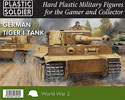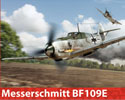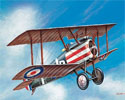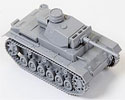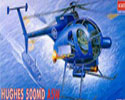The First World War - The Eastern Front
The Eastern Front
The Eastern Front was a line from the Black Sea in the south to the Baltic Sea in the North across which the Russians and Romanian armies faced the German, Austro-Hungarian and Bulgarian armies during the First World War. The Eastern Front was over 1,600km (995 miles) long and this excluded the possibility of a continuous line of trenches developing as had happened on the much shorter Western Front. Operations on the Eastern Front were consequently much more fluid and mobile. The initial German strategy in the east was defensive, the main German offensive action in 1914 being against the French on the Western Front.
Battle of Tannenberg August 1914
During August 1914 Russia initiated an attack on East Prussia by the First Army under Rennenkampf attacking from the north and the Second Army under Samsonov attacking from the south. Against them was the German Eighth Army commanded by General von Prittwitz. At the Battle of Stalluponen on August 17th 1914 General Hermann von Francois, commander of the Eight Army's I Corps, aggressively counter attacked Rennenkampf without Prittwitz's knowledge and drove the Russians back capturing 30,000 prisoners in the process. Prittwitz, concerned that I Corps would be encircled, ordered Francois to withdraw 15 km west to Gumbinnen. Encouraged by the success of Francois Prittwitz subsequently decided to attack Rennenkampf with three Corps of his army. Early success was checked by intense Russian artillery, Prittwitz panicked and ordered a retreat to the line of the Vistula. Prittwitz was sacked by von Moltke who replaced him with Paul von Hindenburg, and appointed Erich Ludendorff as his Chief of Staff.
As soon as he arrived in East Prussia, Hindenburg cancelled the retreat and stabilized the German front. Hindenburg and Ludendorff put into practice a plan devised by Colonel Maximilian Hoffman. Samsonov's Second Army was to be attacked by three Corps, encircling it and destroying it. By August 29th Samsonov was surrounded near Tannenberg. Of a total of 150,000 men of the Second Army only 10,000 managed to escaped. Samsonov, in disgrace, committed suicide in the forest.
Hindenburg and Ludendorff followed the victory at Tannenberg with another, smaller, victory against Rennenkampf's First Army at the First Battle of the Masurian Lakes between September 9th and 14th 1914, inflicting around 125,000 casualties on the Russians.
Battle of Bolimov January 1915
The Russian Second Army and the German Ninth Army engaged in battle just west of Warsaw around the town of Bolimov on January 31st 1915. The battle is significant only for the first use of poison gas by the Germans. The gas was delivered using several thousand shells but, due to the freezing temperatures, the gas simply froze and fell to the ground.
Second Battle of Masurian Lakes February 1915
Paul von Hindenburg planned to force Russia out of the war by an attack by the Eight and Tenth Armies on the Russian Tenth Army located north of the Masurian Lakes. Hindenburg launched his attack on February 7th 1915 and caught the Russians by complete surprise. The Russian Tenth Army retreated in disarray suffering over 50,000 casualties and 100,000 prisoners.
Battle of Lake Naroch March 1916
In 1916 the Russian launched an offensive around the Vilna-Naroch area in Lithuania to help draw the pressure of the French at Verdun. Here Russian forces outnumbered 1.5 million against 1 million Germans. On March 18th the Russian opened their offensive with an artillery bombardment lasting two days. The Russian infantry advanced against a determined German defense and suffered heavy casualties, many of the infantry becoming bogged down in mud caused by the spring thaw, and were easy targets for German machines guns. The offensive ended on April 14th. By this time the Russians had lost over 100,000 casualties and the Germans 20,000. Many of the casualties were down to frostbite and other effects of exposure.
Brusilov Offensive June 1916
On June 4th 1916 the Russian Southwestern Army commanded by General Alexei Brusilov began an offensive planned to relieve the pressure on its Western allies currently heavily engaged at Verdun and the Somme. The offensive opened with an attack on the Hungarian 4th Army at Lutsk. Preluded with a barrage of close to 2,000 guns the Russians overcame numerically superior Hungarian army and routed them. However, the Russian armies to the north failed to support Brusilov effectively, giving Ludendorff, the overall German commander, the opportunity to re-enforce the Austro-Hungarians. Brusilov's offensive began to run out of steam by September and was formally ended on September 20th 1916. Despite being called off the Brusilov Offensive was the most successful allied offensive of the war and cost the Austro-Hungarian army 1.5 million men as casualties and prisoners.
Romania August 1916
Encouraged by the success of the Brusilov Offensive, Romania decided to enter the war on the side of the Entente in order to settle an old dispute regarding the territory of Transylvania. On August 27th 1916 Romanian troops crossed the Austro-Hungarian border into Transylvania. Falkenhayn had been replaced by Hindenburg as overall German Commander because of the failure at Verdun and Falkenhayn had been given the task of opposing the Romanians. By December 1916 Falkenhayn had effectively beaten the Romanians and on December 9th German troops entered Bucharest, the Romanian capital city. Supported by the Russian Army, the Romanian front stabilized during 1917 allowing the Romanian army to re-equip and re-train. During October 1917 revolution in Russia left the Romanians isolated and they agreed to an Armistice on December 9th 1917. The Treaty of Bucharest , signed on May 7th 1918, brought hostilities to a formal conclusion.
Russian Revolution February/October 1917
The First World War had a profound effect on the economy of Russia. Severe food shortages in the cities, compounded by other problems, fuelled political opposition to the Tsarist regime that eventually resulted in a series of revolutions during 1917. In February 1917 a revolution in St Petersburg, the Russian capital, forced the Royal family to abdicate and they were replaced by a Provisional government. The new government, however, refused to consider ending the war and in October a second revolution left the emerging Bolshevik party in power. Lenin, the leader of the Bolsheviks had been living in Switzerland in exile. The Germans had given Lenin free passage to Russia hoping to encourage revolution in Russia. Lenin promised the Russians peace and food and, once in power promptly arranged to negotiate an end to hostilities with Germany. On December 17th a cease-fire went into effect and peace talks commenced at Brest-Litovsk on December 22nd 1917.
Operation Faustschlag February 1918
Many of the Bolsheviks were reluctant to agree to the harsh terms demanded by Germany, preferring instead to stall until a hoped for revolution in Germany took them out of the war. The Germans responded by signing a separate peace treaty with the Ukrainians and ended the cease-fire on February 17th 1918. The next day the Central Powers conducted the last offensive action on the Eastern Front when they implemented Operation Faustschlag, a three pronged attack east taking advantage of the Russian railway system to transport troops. The Central Powers advanced 240km (150 miles) in a week, coming to within 160km (100 miles) of Petrograd (the new name for St. Petersburg) forcing the Bolsheviks to transfer their capital to Moscow. The Russian ruling council were forced to accept German terms and on March 3rd 1918 signed the Treaty of Brest-Litovsk ending the war between Germany and Russia.

